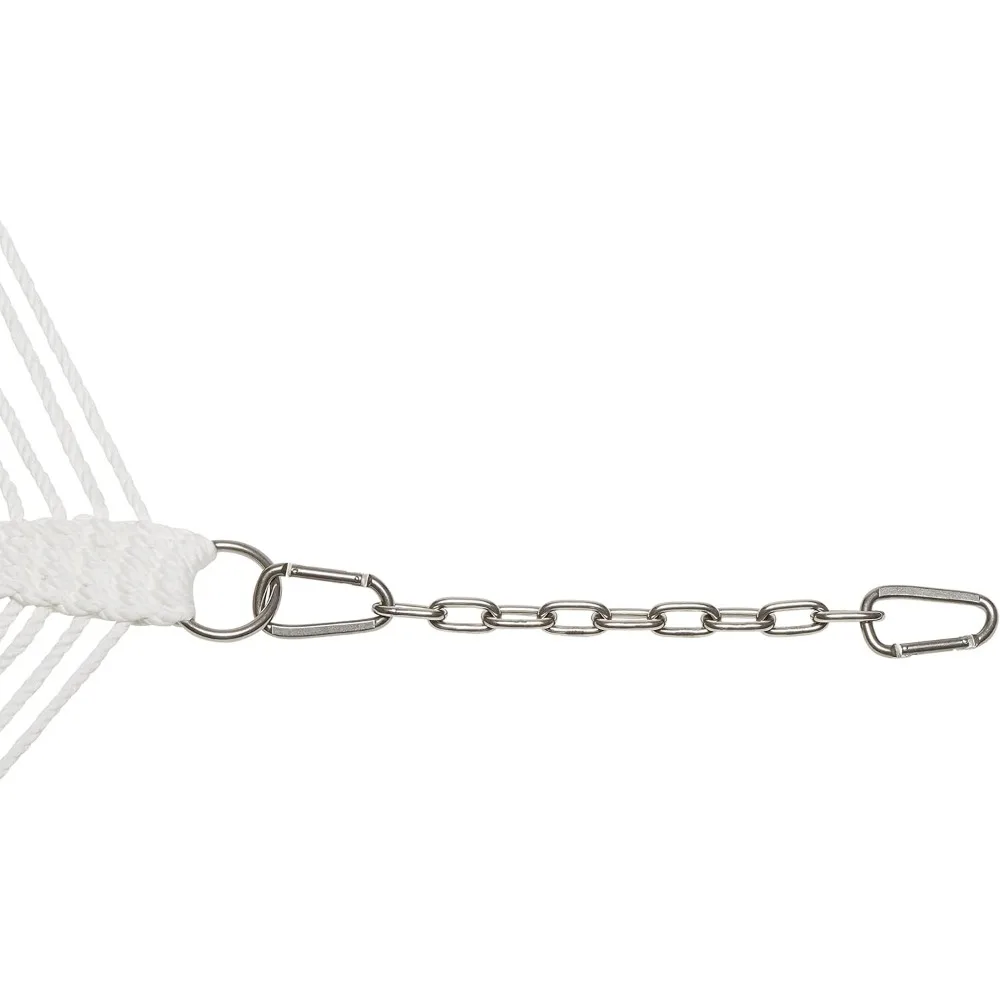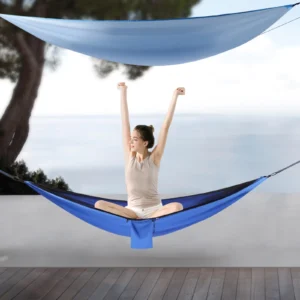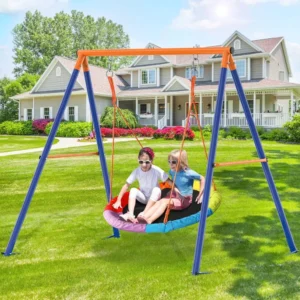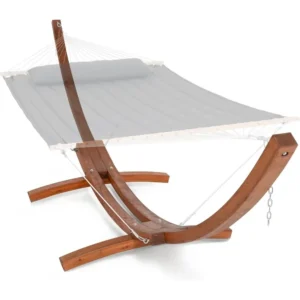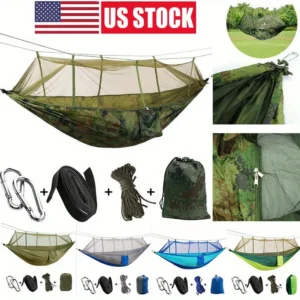Introduction: Why Every Quality Hammock Needs the Perfect Shade Solution
Your premium hammock represents the pinnacle of outdoor relaxation—but without proper shade, that experience can be quickly compromised. A quality shade canopy isn’t merely an accessory; it’s an essential component that completes your luxury hammock setup.
The benefits of adding the right canopy to your hammock experience are substantial:
- UV Protection: Prevents harmful rays that can cause sunburn within 15 minutes and reduces exposure to rays that accelerate skin aging
- Extended Enjoyment: Creates a comfortable microclimate up to 15°F cooler than direct sunlight
- Weather Protection: Shields against unexpected rain, morning dew, and falling debris
- Enhanced Privacy: Creates a personal sanctuary within any outdoor setting
The connection between a premium hammock and its shade solution is inseparable—like fine wine paired with excellent cheese, each elevates the other. As you consider indoor and outdoor hammock placement, understanding shade options becomes critical for maximizing your investment.
In this comprehensive guide, we’ll explore the full spectrum of canopy solutions—from versatile tarps to architectural shade sails, retractable systems to integrated stands—helping you identify the perfect shade companion for your premium hammock experience.
Understanding Hammock Canopy Essentials: Quality Factors to Consider
Before diving into specific canopy types, it’s important to establish the quality markers that separate premium shade solutions from basic alternatives. These factors determine not just the immediate functionality but the long-term value of your investment.
Material Quality Indicators
- Density: Look for fabrics measured in oz/yd² (g/m²)—higher numbers indicate thicker, more durable materials
- UV Resistance: Premium canopies offer UPF 50+ protection, blocking 98% of harmful rays
- Weatherproofing: Quality options feature hydrostatic head ratings of 1,500mm or higher for reliable water resistance
Construction Excellence
- Reinforced edges with double or triple stitching
- Heat-sealed or taped seams for waterproof integrity
- Corrosion-resistant hardware that withstands outdoor elements
- Stress-point reinforcement at corners and attachment points
Design Considerations
The shape and structure of your canopy significantly impact its effectiveness. Diamond shapes excel in light rain situations, while hexagonal or rectangular designs provide maximum coverage during heavy downpours. Adjustability features allow adaptation to changing sun angles throughout the day.
Proper hammock installation requirements and safety guidelines should inform your canopy selection, ensuring the two systems work harmoniously. Remember that the most beautiful canopy is worthless if it compromises the structural integrity of your hammock setup.
1. Hammock-Specific Tarps: Versatile Protection for the Discerning User
Hammock-specific tarps represent the most versatile shade solution for premium hammock setups. Unlike general-purpose tarps, these specialized coverings are designed with specific shapes, attachment points, and materials optimized for hammock protection.
Distinguished Shapes and Their Benefits
- Diamond (Rhombus): Offers excellent coverage-to-weight ratio with minimal material; ideal for mild conditions
- Hexagonal: Provides enhanced side protection while maintaining lightweight properties
- Rectangular: Delivers maximum coverage for harsh weather conditions and privacy
- Asymmetrical: Follows the natural diagonal lay of a hammock, offering targeted coverage where needed most
Premium Materials in High-End Tarps
The difference between standard and premium hammock tarps lies primarily in their materials:
- Silnylon: 1.1 oz/yd² (37 g/m²) fabric with excellent waterproofing up to 2,000mm hydrostatic head
- Silpoly: Superior UV resistance and less stretching when wet compared to Silnylon
- Dyneema Composite: Ultra-premium option at 0.51 oz/yd² (17 g/m²) offering unmatched strength-to-weight ratio
Configuration Flexibility
Premium hammock tarps typically measure between 10 ft × 10 ft (3 m × 3 m) for diamond shapes and 12 ft × 9 ft (3.7 m × 2.7 m) for rectangular designs. This provides adequate coverage for most adult hammock setups.
Setup options range from “storm mode” with sides pitched close to the ground for maximum protection to “porch mode” with one side raised high to capture views and breezes. This adaptability makes tarps particularly valuable for travelers exploring varying environments or dealing with changing weather protection requirements for patio hammock chairs.
Pros and Cons
Advantages:
* Exceptional versatility for different weather conditions
* Lightweight and packable for transport
* Multiple configuration options for varying needs
* Often the most affordable quality protection option
Disadvantages:
* Requires more setup knowledge and time
* May need additional hardware (stakes, guylines)
* Less integrated aesthetic appearance
* Limited UV protection compared to specialized fabrics
2. Integrated Canopy Systems: Seamless Protection for Luxury Hammock Setups
Integrated canopy systems represent the epitome of design cohesion for premium hammock experiences. These purpose-built solutions combine hammock and shade protection into a unified system, eliminating compatibility concerns while presenting a coherent aesthetic.
Premium Material Selection
Manufacturers of integrated systems typically select materials that complement the hammock’s own fabric:
* Marine-grade acrylic canvas with UPF 50+ ratings
* Solution-dyed polyester with 5+ years of colorfastness
* Olefin blends offering natural stain and mildew resistance
These fabrics add approximately 3-5 lbs (1.4-2.3 kg) to the total system weight—a worthy trade-off for the seamless integration they provide.
Structural Support Systems
Unlike separate tarps requiring independent rigging, integrated canopies connect directly to the hammock’s support structure through:
* Telescoping aluminum poles that adjust to desired height
* Carbon fiber frameworks that maintain rigidity with minimal weight
* Integrated connection points designed specifically for the accompanying hammock
Most premium integrated canopies provide 6-8 ft (1.8-2.4 m) of length coverage—sufficient to shelter the full hammock plus additional space for personal items.
Design Harmony
The primary advantage of integrated systems lies in their purposeful design coordination. Colors, patterns, and textures are selected to complement each other, creating a cohesive outdoor furniture statement rather than an assemblage of separate components.
For those seeking comprehensive relaxation solutions, our hammock sets with canopy provide perfectly matched components designed to work together flawlessly. The integrated approach eliminates guesswork about compatibility while ensuring optimal protection positioning.
Pros and Cons
Advantages:
* Perfectly matched components guarantee compatibility
* Streamlined appearance with design cohesion
* Simplified setup process
* Purpose-built connections reduce weak points
Disadvantages:
* Limited to specific hammock models
* Less adaptable to varied situations
* Higher initial investment
* Typically cannot be used separately from the hammock system
3. Shade Sails: Architectural Elegance for Permanent Hammock Spaces
When creating a dedicated hammock retreat, shade sails offer architectural distinction that transforms ordinary outdoor spaces into design statements. These tensioned fabric structures serve as semi-permanent installations that provide reliable protection while enhancing your landscape’s visual appeal.
Geometric Impact
Shade sails derive much of their appeal from their clean geometric shapes:
* Triangular: Creates dynamic visual interest with minimal material
* Rectangular: Maximizes coverage area with clean, modern lines
* Square: Offers balanced proportions for symmetrical spaces
* Custom shapes: Available for unique spaces or design requirements
For optimal hammock coverage, a standard 10 ft × 10 ft (3 m × 3 m) shade sail typically provides sufficient protection while maintaining visual lightness.
Premium Material Characteristics
The quality of a shade sail is directly linked to its material specifications:
* Standard sails use 185 g/m² (5.5 oz/yd²) density fabric
* Premium options utilize 240 g/m² (7.1 oz/yd²) or higher density materials
* High-quality sails block 90-98% of harmful UV radiation
* Advanced fabrics offer 10+ years of color retention and structural integrity
Installation Considerations
Unlike temporary solutions, shade sails require thoughtful installation:
* Mounting points need structural integrity to withstand tension forces
* Posts, walls, or trees must be strategically positioned
* Professional-grade hardware ensures longevity
* Proper tensioning is critical for both appearance and performance
The permanent nature of shade sails makes them ideal for dedicated hammock spaces where you want consistent protection without repeated setup.
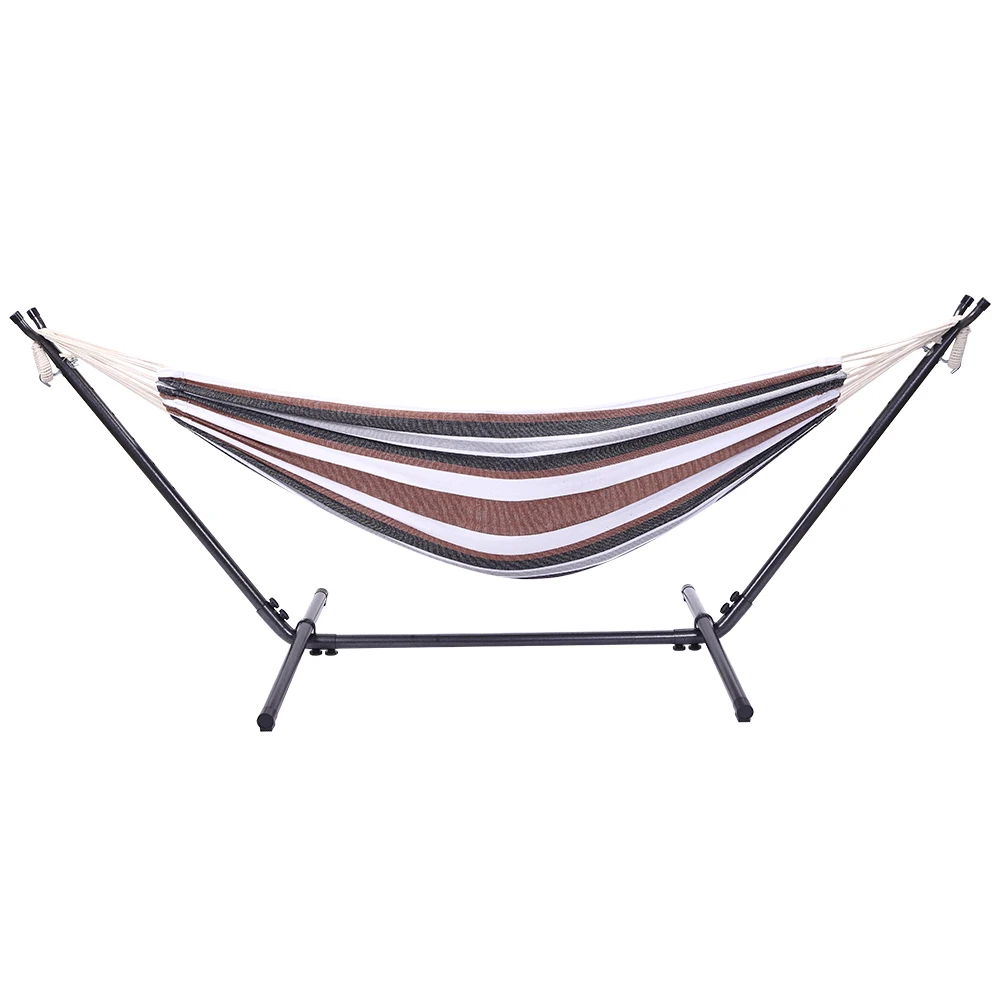
Pros and Cons
Advantages:
* Striking architectural presence enhances outdoor aesthetics
* Durable, long-term solution requiring minimal maintenance
* Excellent UV protection from specialized fabrics
* Creates a defined outdoor room feeling
Disadvantages:
* Requires permanent mounting points
* Professional installation often recommended
* Less adaptable to changing needs
* Higher initial investment than temporary options
4. Retractable Canopies: Adjustable Luxury for Versatile Outdoor Spaces
Retractable canopies represent the perfect marriage of permanence and flexibility. These adjustable systems allow you to deploy protection precisely when needed and retract it when you prefer open sky views, giving you complete control over your hammock environment.
Mounting and Tracking Systems
Several mounting approaches accommodate different hammock setups:
* Wall-mounted tracks for hammocks positioned near structures
* Free-standing frame systems for independent positioning
* Pergola-integrated tracks for existing outdoor structures
* Hybrid systems combining permanent posts with retractable fabric
Quality systems utilize marine-grade stainless steel hardware and anodized aluminum tracking to prevent corrosion and ensure smooth operation year after year.
Premium Fabric Performance
Retractable systems typically feature:
* Acrylic canvas rated for 10+ years of outdoor exposure
* Solution-dyed fabrics that resist fading
* Water-repellent treatments that maintain effectiveness through hundreds of retraction cycles
* Coverage areas up to 12 ft × 10 ft (3.7 m × 3 m)—ample for most hammock setups
Operation Mechanisms
The operational sophistication of retractable canopies ranges from simple to luxurious:
* Manual crank systems offer reliability with minimal components
* Pulley-assisted designs reduce the effort required
* Motorized options with remote control provide effortless adjustment
* Smart systems with wind and rain sensors offer automatic protection
Premium motorized systems operate in temperature ranges from -4°F to 122°F (-20°C to 50°C) and can withstand winds up to 24 mph (38 km/h) when extended.
Finding the best indoor and outdoor hammock locations becomes easier with retractable systems, as they adapt to changing sun angles throughout the day and seasons, ensuring your hammock spot remains comfortable year-round.
Pros and Cons
Advantages:
* Adapts to changing weather and user preferences
* Preserves canopy fabric when not in use
* Combines permanence with flexibility
* Creates a premium, resort-like experience
Disadvantages:
* Higher cost than fixed solutions
* Mechanical components require occasional maintenance
* Installation complexity, often requiring professional help
* Motorized versions need electrical access
5. Portable Pop-Up Canopies: Refined Protection for Premium Mobile Experiences
For those who value flexibility in their hammock experiences, portable pop-up canopies deliver protection wherever your relaxation journey takes you. These self-contained systems combine ease of transport with quick deployment, ensuring your hammock enjoyment isn’t limited to a single location.
Frame Engineering Excellence
The quality of portable canopies is largely determined by their frame construction:
* Aircraft-grade aluminum offers the ideal balance of strength and weight
* Steel frames provide maximum stability in variable conditions
* Composite connectors reduce weight while maintaining durability
* Precision joints ensure smooth operation through hundreds of setup cycles
Premium portable systems weigh between 15-35 lbs (6.8-15.9 kg)—substantial enough for stability yet manageable for transport.
Quick Deployment Design
High-quality portable canopies distinguish themselves through thoughtful design:
* Setup times of 2-5 minutes without requiring tools
* Intuitive mechanisms that prevent pinched fingers
* Adjustable height settings to optimize shade positioning
* Compact packed dimensions of approximately 48 × 8 × 8 inches (122 × 20 × 20 cm)
Material and Stability Considerations
Despite their portable nature, premium pop-up canopies utilize commercial-grade materials:
* 600-denier polyester with specialized UV inhibitors
* Waterproofing treatments delivering 50+ UPF protection
* Reinforced corner construction to prevent tearing
* Vented tops to increase stability in windy conditions
These portable protection systems pair perfectly with our portable hammocks and stands, creating a complete mobile relaxation solution that doesn’t compromise on comfort or protection.
Pros and Cons
Advantages:
* Complete flexibility to create hammock spaces anywhere
* No installation requirements—perfect for renters
* Storage capability during off-seasons
* One-time investment serves multiple locations
Disadvantages:
* Less stability than permanent installations
* Requires storage space when not in use
* Limited architectural appeal compared to permanent options
* May need additional weight or stakes in windy conditions
6. Hammock Stands with Integrated Canopies: Complete Luxury Systems
For the ultimate in convenience and design cohesion, hammock stands with integrated canopies deliver a comprehensive solution. These all-in-one systems eliminate the need to match separate components, providing a complete relaxation environment in a single product.
Premium Material Combinations
Integrated stands feature thoughtfully paired materials:
* Powder-coated steel frames supporting 300-450 lbs (136-204 kg)
* Weather-resistant hardwoods like teak or acacia for natural elegance
* Aircraft-grade aluminum for lightweight yet sturdy options
* Coordinated Sunbrella® or Olefin fabrics for canopies
The typical footprint measures approximately 14 ft × 5 ft (4.3 m × 1.5 m), creating a defined relaxation zone within your outdoor space.
Design Sophistication
These systems transcend basic functionality to become statement pieces:
* Architecturally inspired forms that enhance outdoor aesthetics
* Integrated lighting options for evening enjoyment
* Built-in convenience features like side tables or device holders
* Harmonized color palettes across all components
Installation and Portability Balance
While providing the appearance of permanent structures, quality integrated systems offer surprising adaptability:
* Tool-free assembly for seasonal setup and takedown
* Modular components that separate for storage when needed
* Wheeled options for repositioning around your property
* Weather-resistant materials that can remain outdoors year-round in moderate climates
Our heavy-duty hammock sets often include integrated canopy options, providing a complete solution that combines robust support with elegant sun protection.
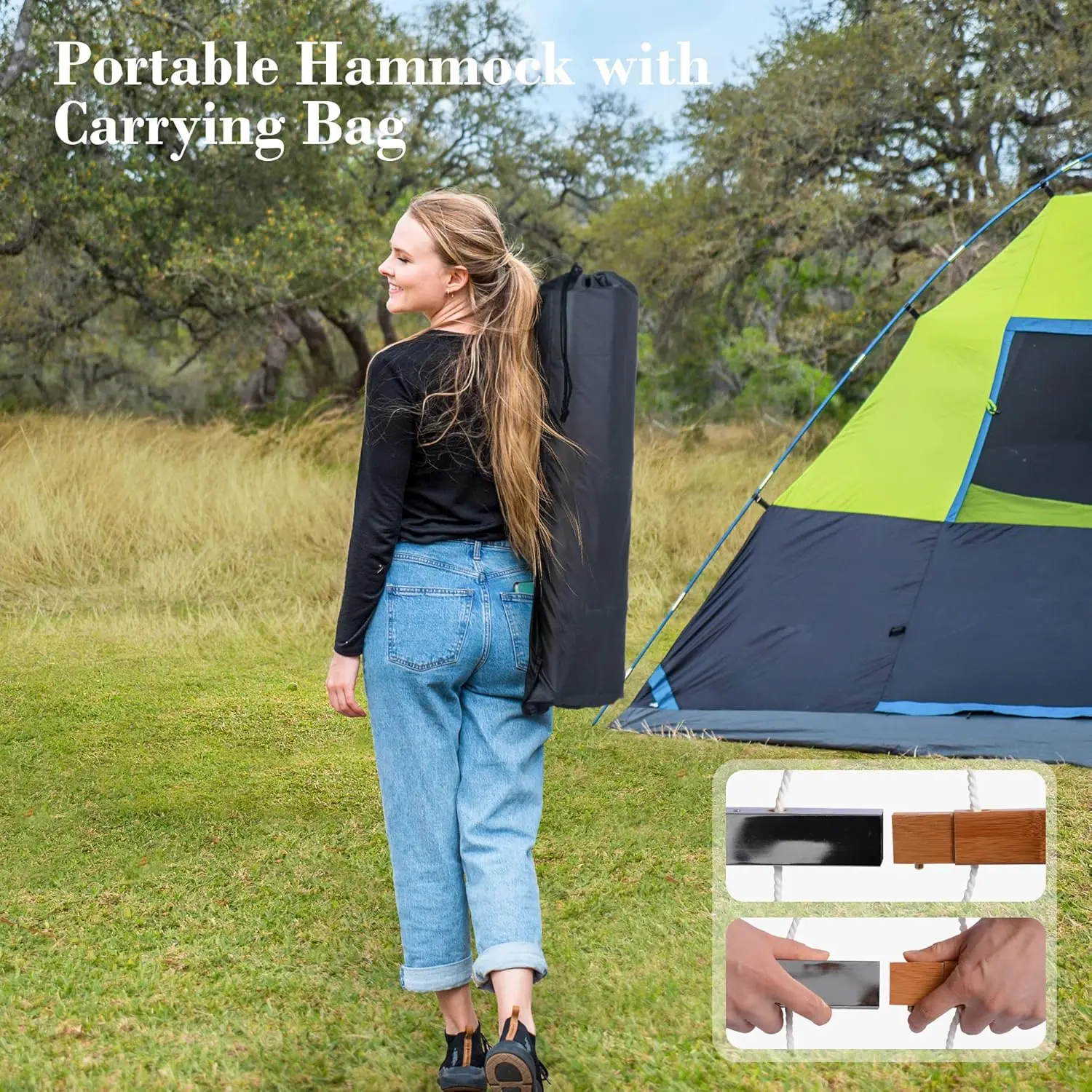
Pros and Cons
Advantages:
* Complete solution requiring no additional purchases
* Perfect component compatibility by design
* Statement-piece aesthetic value
* Simplified selection process
Disadvantages:
* Less customization potential
* Higher initial investment
* Larger storage requirements if seasonal
* Limited to the included hammock specifications
Camping Hammock Sets with Bug Net, Ultralight Camping Hammock Sets
$139.72 Select options This product has multiple variants. The options may be chosen on the product pageClassic Wooden Stand Hammock Sets, Heavy Duty Hammock Sets
$1,061.68 Select options This product has multiple variants. The options may be chosen on the product pageHammock Sets with Canopy, Heavy Duty Hammock Sets
$286.31 Select options This product has multiple variants. The options may be chosen on the product pageFolding Hammock Sets, Quick Setup Hammock Sets
Price range: $305.52 through $583.27 Select options This product has multiple variants. The options may be chosen on the product pageHeavy Duty Hammock Sets, Wooden Arc Stand Hammock Sets
$878.66 Select options This product has multiple variants. The options may be chosen on the product pageCamping Hammock Sets with Bug Net, Complete Camping Hammock Systems
Price range: $82.73 through $97.96 Select options This product has multiple variants. The options may be chosen on the product page
Comparison Chart: Finding Your Ideal Hammock Canopy Solution
| Canopy Type | Mobility | Installation Difficulty | Weather Resistance | UV Protection | Aesthetic Integration | Price Range | Best Use Case |
|---|---|---|---|---|---|---|---|
| Hammock Tarps | Excellent | Moderate | Very Good | Good | Good | $ | Versatile environments, travelers |
| Integrated Canopies | Good | Easy | Excellent | Excellent | Excellent | $$ | Dedicated hammock users seeking simplicity |
| Shade Sails | Poor | Difficult | Excellent | Excellent | Excellent | $$$ | Permanent installations, design-focused spaces |
| Retractable Canopies | Poor | Difficult | Excellent | Excellent | Very Good | $$$$ | Versatile spaces with changing needs |
| Portable Pop-Ups | Excellent | Easy | Good | Very Good | Good | $$ | Multiple locations, renters |
| Integrated Stands | Moderate | Easy | Very Good | Very Good | Excellent | $$$$ | Complete solution seekers, design enthusiasts |
Key Considerations When Selecting Your Premium Hammock Canopy
Installation Environment: Assess your available supports—trees require different solutions than open patios or decks. Permanent structures offer stability but limit flexibility.
Mobility Requirements: Determine whether your hammock remains in one location or travels frequently. Portable canopies sacrifice some stability for convenience, while permanent installations offer superior protection but remain fixed.
Regional Weather Patterns: Coastal locations require corrosion-resistant materials and stronger wind tolerance, while areas with intense sun need fabrics with higher UV protection ratings.
Aesthetic Integration: Your canopy should complement your outdoor décor. Architectural shade sails make bold statements, while integrated systems offer design cohesion.
Material Longevity: Premium materials command higher prices but deliver extended lifespans—quality acrylic fabrics can last 7-10 years versus 2-3 years for standard polyester.
Investment Proportion: Your canopy investment should align with your hammock’s quality. A premium hammock deserves protection that matches its caliber, particularly when understanding whether it’s okay to leave your hammock outside.
Seasonal Usage Patterns: Year-round use justifies more substantial installations, while seasonal enjoyment might favor storage-friendly options.
How to Properly Install Your Hammock Canopy for Maximum Protection
Proper installation transforms a good canopy into an exceptional one. Follow these universal principles regardless of your chosen canopy type:
Position height optimally: Install the canopy 18-24 inches (46-61 cm) above the hammock—close enough for protection, high enough for ventilation.
Angle for maximum coverage: Pitch rain-shedding canopies at approximately 30° to maximize water runoff while maintaining coverage area.
Account for sun movement: Position asymmetrical coverage to block afternoon sun (typically western exposure in North America).
Create proper tension: Remove wrinkles and sags that collect water by establishing even tension across all attachment points.
Secure against wind: Use stakes, weights, or permanent anchors rated for your local wind conditions.
Test before trusting: Spray water on your installed canopy to identify potential drip points before they surprise you during actual rain.
For complex installations, reference our guide to ultimate heavy-duty hammock stands for compatible mounting options that ensure structural integrity.
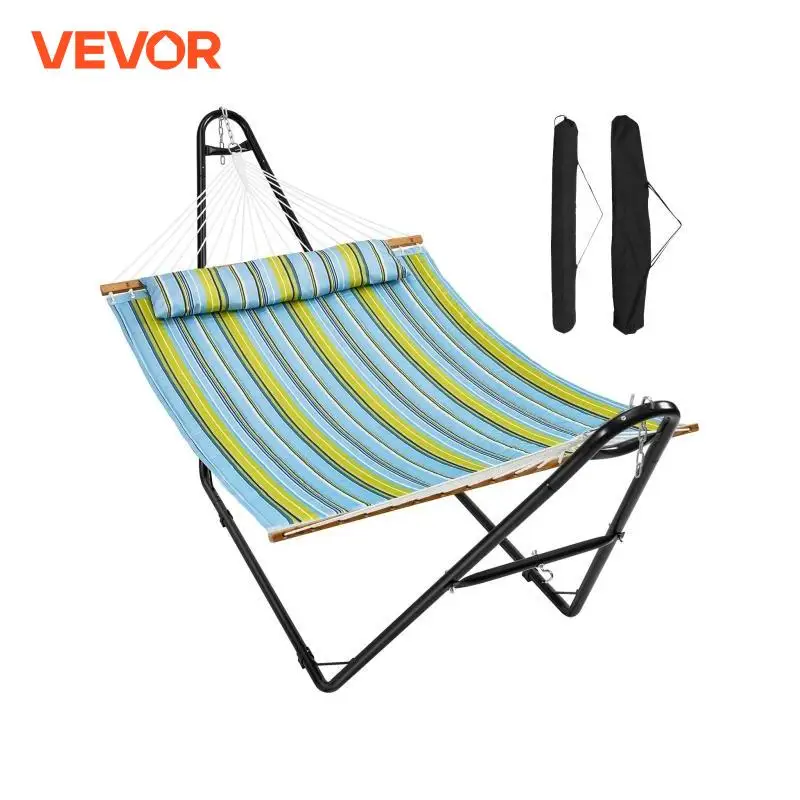
FAQ: Expert Answers to Common Hammock Canopy Questions
Can I leave my hammock canopy outside year-round?
Premium canopies with marine-grade fabrics and UV inhibitors can remain outdoors in moderate climates. However, removing and storing during extreme weather seasons will substantially extend their lifespan.
How do I clean and maintain my canopy fabric?
Most premium canopies respond well to gentle cleaning with mild soap and lukewarm water. Avoid harsh chemicals that can damage waterproofing treatments. Allow complete drying before storage to prevent mildew.
What is the most weather-resistant canopy option?
Integrated canopy systems using Sunbrella® or similar marine-grade fabrics offer the best overall weather resistance, handling sun, rain, and wind without degradation.
Are hammock-specific tarps better than general tarps?
Yes—hammock tarps feature specialized shapes, reinforced attachment points, and lightweight weatherproof materials specifically designed for overhead protection, making them significantly more effective than general-purpose tarps.
How much additional weight will a canopy add to my hammock system?
Lightweight hammock tarps add 1-2 lbs (0.5-0.9 kg), while integrated systems might add 3-5 lbs (1.4-2.3 kg). Standalone canopies and shade structures don’t add weight to the hammock itself.
Can I install a permanent canopy over a portable hammock?
Absolutely—many users combine portable hammocks with permanent shade structures for the perfect blend of flexibility and consistent protection.
Enhancing Your Canopy: Premium Accessories for the Ultimate Hammock Experience
Take your hammock canopy to the next level with these refinements:
Weather Protection Enhancements: Add drip lines to prevent water tracking down hammock suspension, or install rain catchers to collect water for plants or outdoor use.
Integrated Lighting Systems: Waterproof LED string lights or solar-powered lanterns create ambient evening atmospheres while extending usable hours.
Storage Solutions: Attachable pouches and gear hammocks keep books, devices, and refreshments within reach while protected from the elements.
Extended Guy Line Systems: Premium reflective cordage with line tensioners allows precise adjustment while preventing nighttime tripping hazards.
Seasonal Adaptations: Mosquito netting for summer, wind breaks for shoulder seasons, and thermal underlayments for cooler weather extend your hammock season.
Our camping hammocks and stands collection includes many compatible accessories designed to enhance your outdoor experience regardless of your chosen canopy style.
Conclusion: Elevating Your Hammock Experience with the Perfect Shade Solution
The perfect shade solution transforms your premium hammock from a fair-weather friend into an all-day sanctuary. By selecting a canopy that matches your specific needs—whether the versatility of a hammock tarp, the seamless integration of a purpose-built canopy, or the architectural statement of a shade sail—you ensure protection that enhances rather than compromises your relaxation experience.
Quality shade solutions represent an investment in both the longevity of your hammock and the breadth of your enjoyment. The right canopy extends your hammock hours throughout the day, expands usable days throughout the season, and protects your premium hammock investment for years to come.
Consider your specific environment, usage patterns, and aesthetic preferences as you select from the options we’ve explored. Whichever direction you choose, remember that in the world of premium hammocks, proper shade isn’t an afterthought—it’s an essential component of the complete experience.

